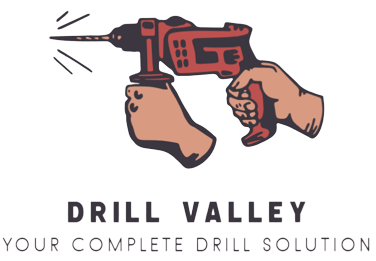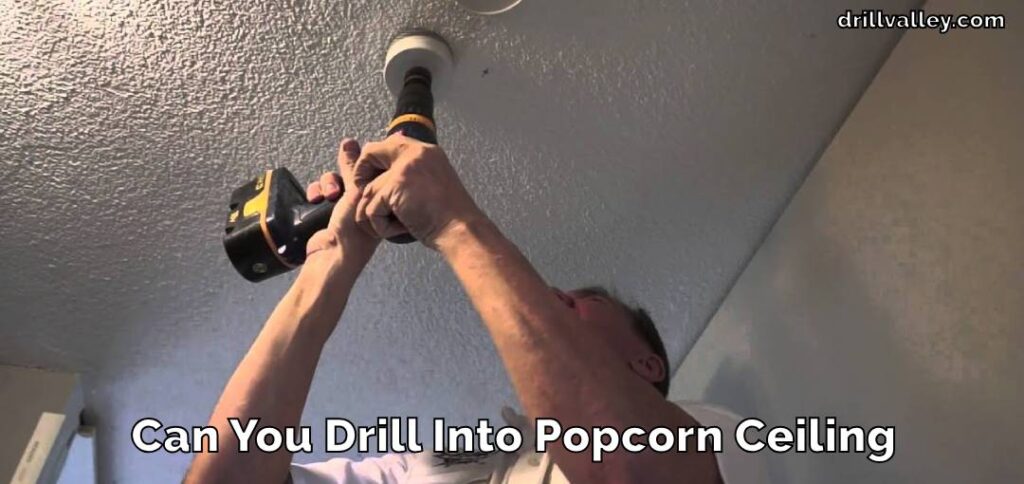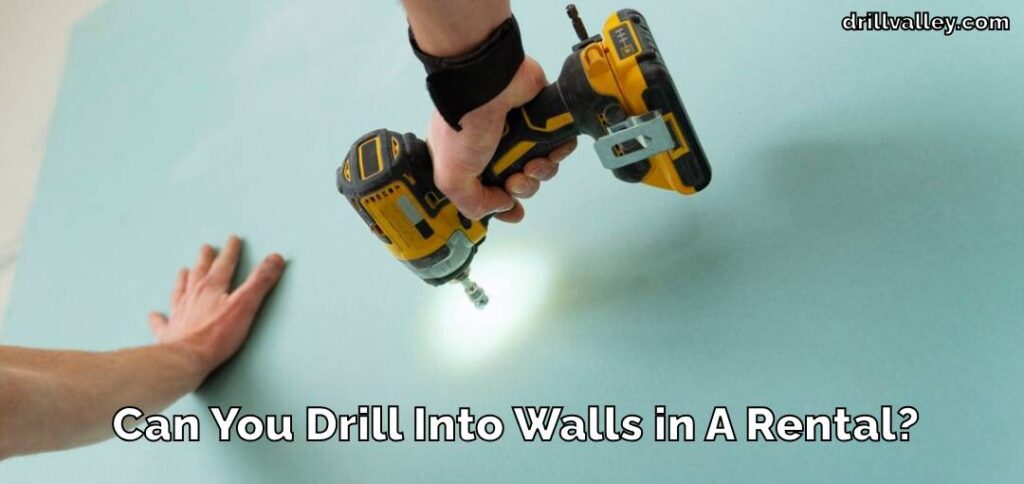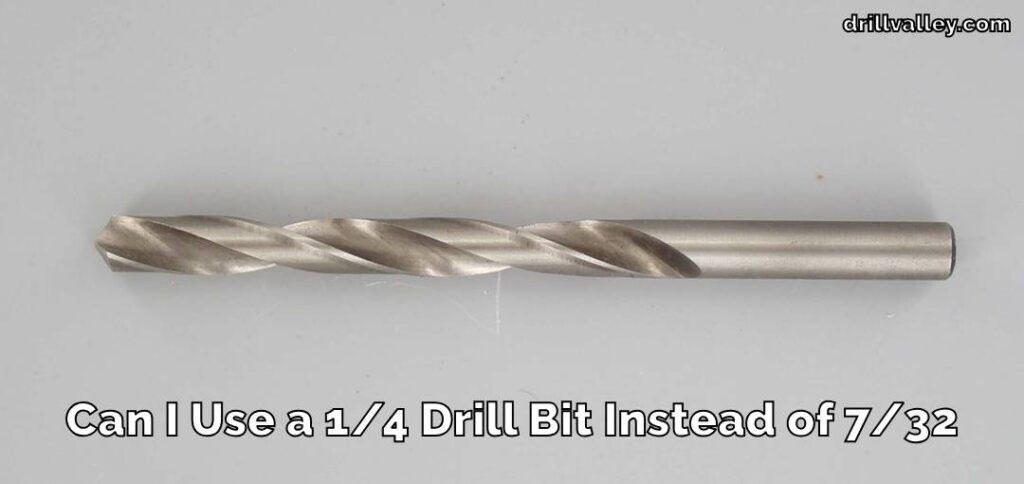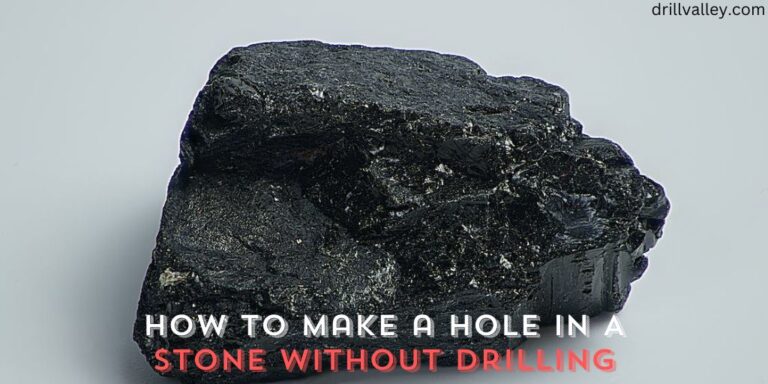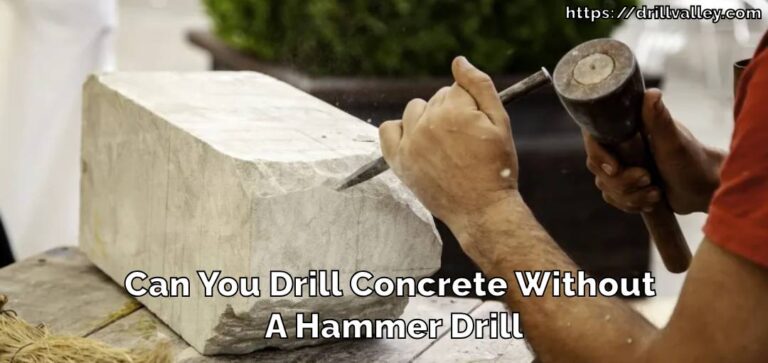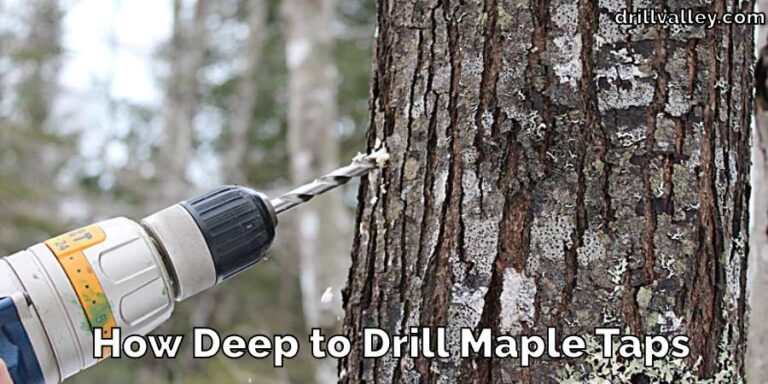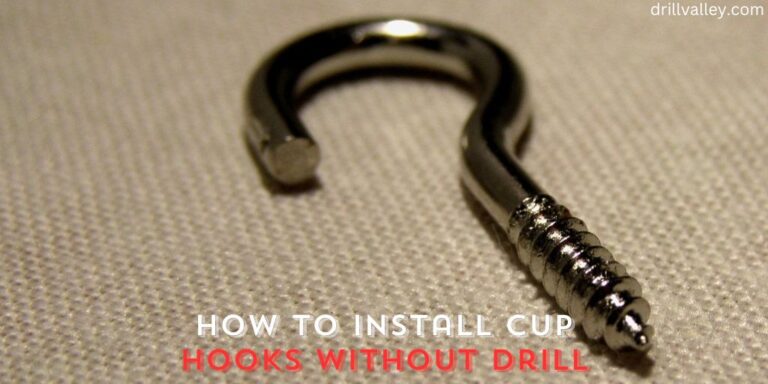Can You Use Impact Driver Bits in A Drill
Knowing whether you can swap impact driver bits into a regular drill matters more than you might realize. It’s not just a question of “Can You Use Impact Driver Bits in A Drill” but rather, “Is this the best way to tackle the job?” For folks who love to fix, build, or create, understanding the ins and outs of your tools can be the difference between a project that’s a breeze and one that’s a battle.

It’s like knowing whether your trusty old hammer or that shiny new nail gun is the right choice for your next project. So, let’s clear up the confusion and make sure you’re armed with the knowledge to use your tools to their full potential, whether you’re turning a dream project into reality or tackling a critical job on the construction site.
Can You Use Impact Driver Bits in A Drill
Yes, you can use impact driver bits in a drill.
Here’s the scoop: The design of impact driver bits allows them to fit snugly into the chuck of most regular drills. It’s like discovering that your phone charger also fits your friend’s phone – a handy bit of versatility.
These bits are made tough, ready to stand up to the intense forces of an impact driver. So, when you pop them into your regular drill, they’re more than capable of handling the job, whether you’re assembling furniture or tackling a DIY project.
But, keep this in mind: while they fit and get the job done, using impact driver bits in a drill is like using a heavy-duty truck for a grocery run. Sure, it works, but it’s not exactly what it was built for. These bits are designed to withstand the high torque of impact drivers, not the steady spin of a drill.
So, although it’s completely fine to use them in your drill for most tasks, they shine brightest when paired with the tool they were made for – the impact driver. It’s all about using the right tool for the right job to make your work smoother and your results better.
Understanding the Tools
Starting off, let’s dive into a bit of a handy tip that might save you some time and hassle in your next project. Ever wonder if those tough bits made for impact drivers can fit into your regular drill? Well, they sure can. Think of it as a little hack that can make your tools a bit more flexible.
Easy Fit: Impact driver bits are designed to snugly fit into the chuck of most drills. It’s like finding a universal key for multiple locks. These bits are tough cookies, built to handle the high force of impact drivers with ease. So, when you use them in your drill, they’re more than capable of tackling tasks, from simple assembly jobs to more involved DIY projects.
Versatility in Action: While these bits fit well and do the job, it’s a bit like using a heavy-duty vehicle for a light errand. They’re meant for the high-power environment of impact drivers, not the gentler turn of drills. But, for many everyday jobs, they work just fine in a drill. They’re particularly handy when you need something durable that won’t slip easily.
Optimal Use Scenario: Though it’s okay to use these bits in your drill for various tasks, they’re at their best with impact drivers. That’s where you’ll see the peak of their performance and durability. It’s all about using the right tool for the job to keep your project moving smoothly and your tools in top shape.
To wrap it up, yes, you can totally use impact driver bits in a regular drill. It’s a nifty option to have, especially when you’re in a pinch. Just remember, for the absolute best results and to keep your tools running like a dream, match the bit to the tool it was designed for. Happy drilling!
Compatibility Deep Dive
Taking the plunge into the nuanced world of drills and drivers, we stumble upon a curious case: impact driver bits slotting seamlessly into regular drills. It’s akin to the moment you realize that chocolate and chili, though an unlikely duo, create a mesmerizing taste. This exploration isn’t just about fit; it’s about unveiling the potential within our toolboxes.
The Science Behind the Fit
At the heart of this compatibility lies the hexagonal shank of impact driver bits. This design isn’t just a stroke of luck; it’s a thoughtful integration that allows these bits to mate with the chucks of most drills effortlessly.

Picture it as finding a universal remote that somehow commands every device you own. The keyless chuck on many drills embraces this versatility, making it a cinch to swap bits on the fly.
Navigating Safety and Performance
While it’s thrilling to discover this level of interoperability between impact driver bits and regular drills, it’s crucial to tread carefully. Imagine donning ice skates for a run down the basketball court technically, you can do it, but will you be MVP?

Similarly, although you can fit impact bits into drills, pondering their efficacy and safety is paramount. The goal is to achieve a flawless performance, not just to make do.
This blend of tools opens up a realm of possibilities. Employing impact driver bits in drills might feel like you’ve unlocked a hidden level in your DIY journey. However, the wisdom lies in discerning when this combination enhances your work versus when it’s merely a makeshift solution.
For tasks requiring precision and finesse, like drilling holes or managing a variety of fasteners, the adaptable nature of drills with a variable speed setting shines. Conversely, for the high-octane demands of driving screws into stubborn materials, the unyielding force of an impact driver, armed with its torque rating and durable design, becomes indispensable.
Within the tapestry of power tools, from drill drivers to hammer drills, lies a spectrum of capabilities. Each tool, whether it boasts a brushed motor or champions the efficiency of brushless technology, plays a pivotal role in shaping our projects.
The beauty of this diversity, from the compact impact driver to the robust hammer drill, is in how these tools complement each other, offering solutions for both lighter tasks and those that require a bit more muscle.
Choosing the Right Bit for the Job

Amid this toolkit symphony, selecting the right bit emerges as a critical step. Regular driver bits and square driver bits each serve distinct purposes, catering to different materials and project scales.
For the aficionados of precision, the impact driver, with its quick project capability and knack for driving in a vast quantity of fasteners, is a godsend. Meanwhile, the drill stands as an essential tool for precise hole placement and handling of a diverse array of materials.
For those on their power tool journey, delving into an impact driver buying guide or weighing the drill vs. impact driver considerations can illuminate the path. Understanding the advantage of impact drivers, with their powerful torque and knack for handling lots of fasteners, can significantly influence your tool collection choices.
As we wade deeper into the realm of DIY and professional construction, the harmony between drills and driver bits speaks volumes about the evolution of power tools.
From the quick projects that bring immediate satisfaction to the advanced projects that challenge our skills, this knowledge serves as a beacon, guiding us toward making informed choices that elevate our work from good to exceptional.
The dance between impact driver bits and regular drills is more than just a convenience; it’s a testament to the ingenuity embedded in the design of power tools.
While it’s empowering to know that we can interchange these components, the true artistry lies in selecting the perfect tool and bit combination for the task at hand, ensuring safety, efficiency, and the joy of creating something with our own hands.
Benefits of Cross-Usage

Let’s get into how mixing and matching bits between drills and impact drivers can be more than just a makeshift solution—it can be a smart choice in some scenarios. Imagine finding a secret trick in your favorite game that makes completing levels easier; that’s what using impact driver bits in your drill can feel like in the right situations.
Durability and Efficiency: Impact driver bits are the tough guys of the bit world, designed to take a beating and keep on going. They’re like heavy-duty boots that protect your feet, no matter the terrain. This ruggedness means when you use them in your drill, they’re less likely to break or wear out, especially on jobs that demand a bit more grunt.
Specific Scenarios Where Impact Bits Shine in Drills: There are moments in DIY or construction when these bits really come into their own in a drill. For instance, when you’re working with hard materials like metal or dense woods, or when you’re driving long screws where a regular bit might give up the ghost. It’s like having a secret weapon for those tougher-than-usual challenges.
While using impact driver bits in drills might not be the first thing you think of, it can be a game-changer in certain situations. Their built-to-last nature can bring a level of durability and efficiency to your drill work that regular bits might not offer. It’s all about knowing when to play this ace up your sleeve for the best possible outcome in your projects.
Potential Drawbacks and Limitations

Let’s dive into why using impact driver bits in a drill isn’t always the golden ticket and crunch some numbers on whether these bits are a wise choice for your wallet.
Understanding the Limits: Think of impact driver bits like sports shoes designed for specific activities—basketball shoes for the court, running shoes for the track. They’re made for the high-impact, torque-heavy world of impact drivers. When you use them in a regular drill, it’s a bit like jogging in basketball shoes; you can do it, but it’s not quite right.
These bits might not perform as expected in drills, especially for precision tasks where the drill’s subtlety and control are key. It’s about knowing when it’s okay to bend the rules and when to stick to the playbook.
Cost Analysis: Diving into the dollars and cents, impact driver bits typically come with a heftier price tag, thanks to their beefed-up design meant to take a beating. If you’re someone who primarily uses a drill, shelling out more for these bits might seem like investing in a high-end espresso machine when you’re perfectly happy with your regular coffee maker.
Sure, it’s nice to have the option, but if you’re not leveraging the bits’ full potential, it might not be the best use of your funds. While it’s tempting to use impact driver bits in a drill for their durability, it’s crucial to weigh the benefits against the potential drawbacks and costs.
It’s all about making smart choices that match your needs and getting the most bang for your buck without compromising on the quality of your work.
Expert Tips for Using Impact Driver Bits in a Drill
When diving into the clever hack of using impact driver bits in a regular drill, you’re essentially unlocking a new layer of utility from your beloved tools. However, let’s go over some expert advice. It’s all about smooth sailing through your projects, and avoiding any potential snags along the way.
Ensuring the Bit is Securely Fastened
The initial step is akin to checking the ropes before on a climb you must ensure your impact driver bit is firmly anchored within the drill’s chuck. The goal is to achieve a fit so perfect that there’s no wobble or risk of the bit dropping mid-task.
This is especially critical when dealing with heavy-duty tasks or sinking lag bolts into tougher materials. A properly secured bit is the cornerstone of precise, efficient drilling, turning your drill into an even more versatile tool.
Navigating Through Common Hurdles
This method without caution can lead to common pitfalls such as bit slipping or undue wear. To circumvent these, begin at a lower speed, letting the bit and screw get acquainted before ramping up the power. This gentle start, much like easing into a cold pool, allows for a smoother operation and minimizes slip-ups.
For those using adjustable-speed tools or drills with a brushless motor, this tip is golden as it leverages the tool’s capability to match the task’s demands while optimizing the time between charges.
The brushless motor, a standout feature in modern impact drivers and some power drills, not only enhances the tool’s efficiency but also reduces the heat generated during heavy use. This means you can drive lots of wood screws or manage projects involving soft materials without overheating your tool, extending both the life of your bits and the drill itself.
Choosing the Right Bit for the Job
With the myriad of impact driver types and the breakdown of impact drivers available, selecting the right bit for your drill can seem daunting. Whether you’re navigating the realms of heavy-duty tool use, dealing with different levels of torque, or simply assembling a power tool combo kit, understanding the types of impact drivers and their corresponding bits is crucial.
Proper driver bits, designed for specific tasks—be it driving screws into soft materials or handling the robust needs of lag bolts—make all the difference in achieving a clean, efficient finish.
The Dance of Drilling
Remember, using your drill with an impact driver bit is a delicate balance. It’s not just about brute force; it’s about the right amount of pressure, the perfect speed, and the proper bit. It’s a symphony of elements that, when aligned, result in a job well done.
Whether you’re a seasoned pro wielding impact drills for intricate projects or a homeowner piecing together furniture with a power drill, the principle remains the same: understanding and respecting the capabilities and limits of your tools will lead to the best outcomes.
Integrating impact driver bits into the repertoire of your drill extends the versatility of your tool collection. With attention to detail, a careful approach to securing the bit, and mindful usage, you can enhance your drilling experience.
This method not only opens up new possibilities for tackling various projects but also exemplifies the innovative spirit of DIY enthusiasts and professionals alike.
Whether you’re drilling into soft materials, managing lots of wood screws, or navigating through heavy-duty tasks, the right knowledge and approach will make your work not just effective but also enjoyable.
Making the Right Choice for Your Project
Choosing the right drill bit. This choice can make a big difference in how smoothly your work goes and the quality of the final product. Let’s break it down into simple terms to help you make the best decision for your task.
Evaluate Your Project: Take a good look at what you’re working with. If you’re up against tough materials or a lot of screws, impact driver bits could be just the ticket, much like how sturdy boots support you on a tough hike.
Precision Matters: For those finer tasks where accuracy is key, regular drill bits are likely your go-to. They’re perfect for when you need a gentle touch.
Look at Alternatives: If you’re after durability but aren’t quite convinced about impact bits, there are other options like titanium or cobalt bits that offer long-lasting service without the need for a switch-up.
Expand Your Toolbox: Adding accessories like bit holders or extensions can give your drill more versatility and reach, opening up new ways to tackle your project.
Choosing the right bit isn’t just a minor detail it’s a crucial part of ensuring your project’s success. By understanding what you’re working on and the tools at your disposal, you can make an informed choice that leads to better results.
Whether it means grabbing an impact driver bit or sticking with a traditional drill bit, what matters most is that you’re equipped for the job ahead, ready to turn your vision into reality.
Conclusion
Choosing the right bit for your drill—be it an impact driver bit or a standard drill bit—is crucial for the success of your projects. Impact driver bits offer durability and resilience, especially suited for heavy-duty tasks and tougher materials.
Yet, they’re not a universal fix for every drilling need. It’s important to match the bit to the specific requirements of your project, considering both performance and safety.
Making an informed choice ensures not only the quality of your work but also the longevity of your tools and your personal safety. Remember, the best results come from using the right tools for the right job.
Read Also – Can You Drill Into Popcorn Ceiling
Can You Use Impact Driver Bits in A Drill
Knowing whether you can swap impact driver bits into a regular drill matters more than…
Can You Drill Into Popcorn Ceiling
Wondering Can You Drill Into Popcorn Ceiling for your next home improvement project? Popcorn ceilings,…
Can You Drill Into Walls in A Rental?
Renting an apartment brings the challenge of personalizing your space within the confines of rules…
Can I Use a 1/4 Drill Bit Instead of 7/32
When you’re elbows deep in a project and suddenly realize the 7/32 drill bit you…
Can You Drill Concrete Without A Hammer Drill
Drilling into concrete requires both precision and the right tools, notably a hammer drill and…
Can You Use Different Brand Drill Bits?
The right drill bit size is crucial for any project, big or small. It’s the…
